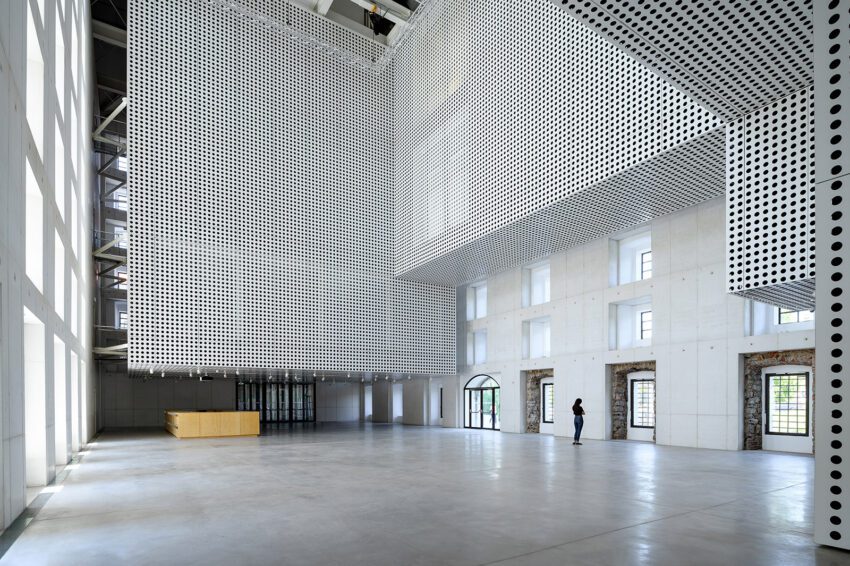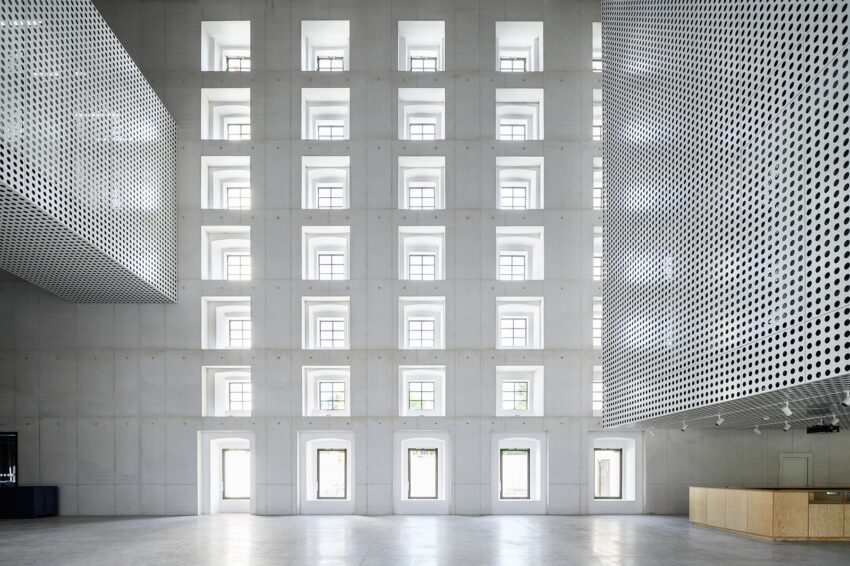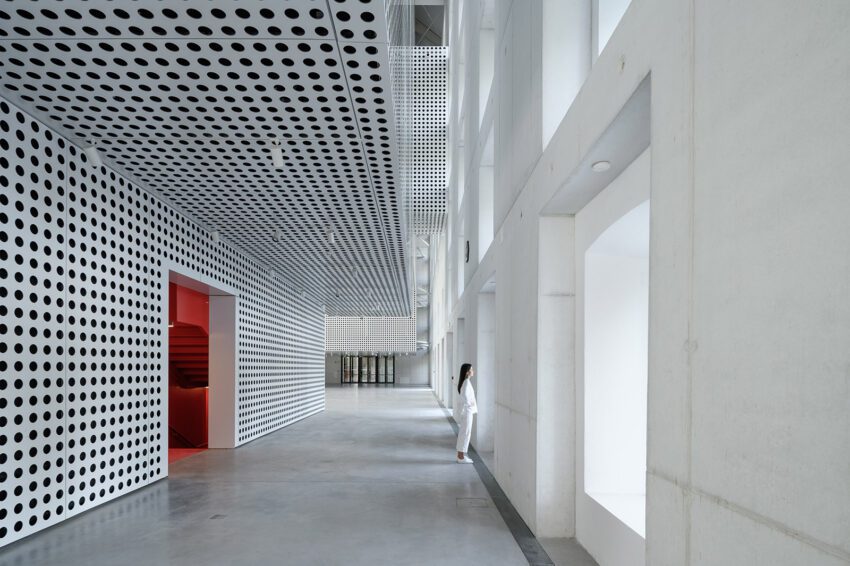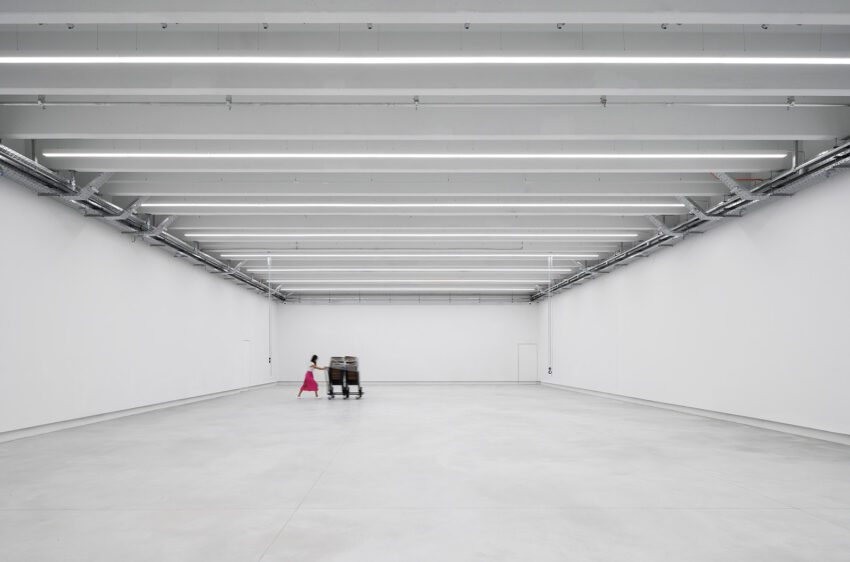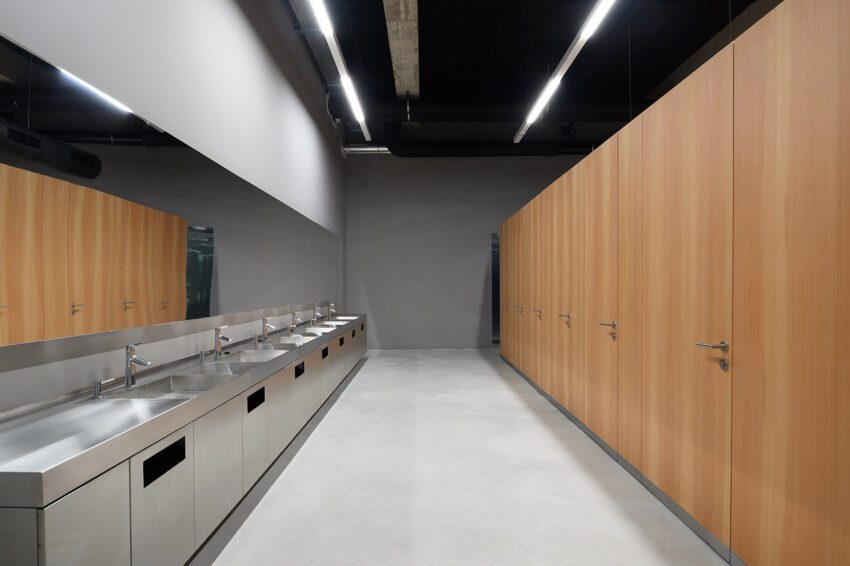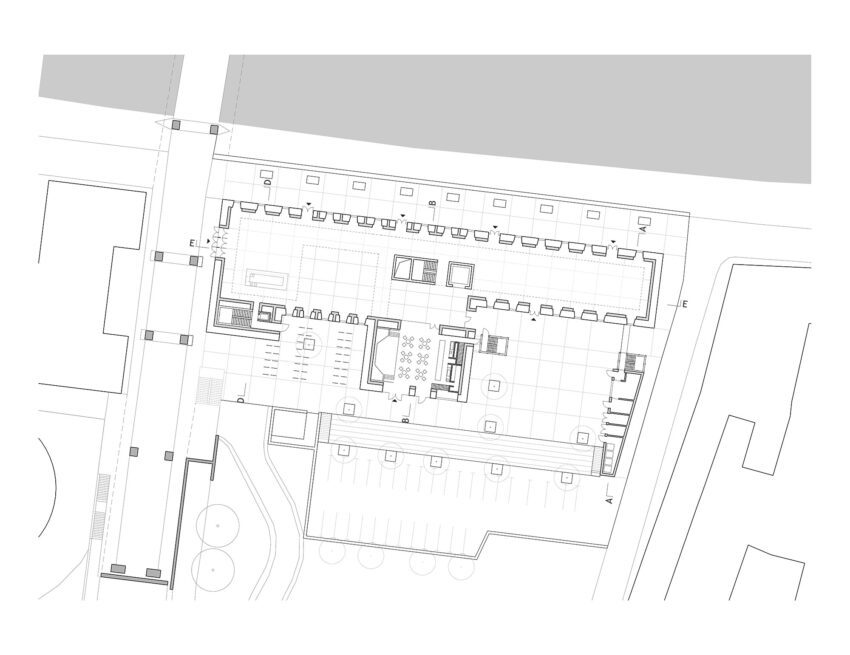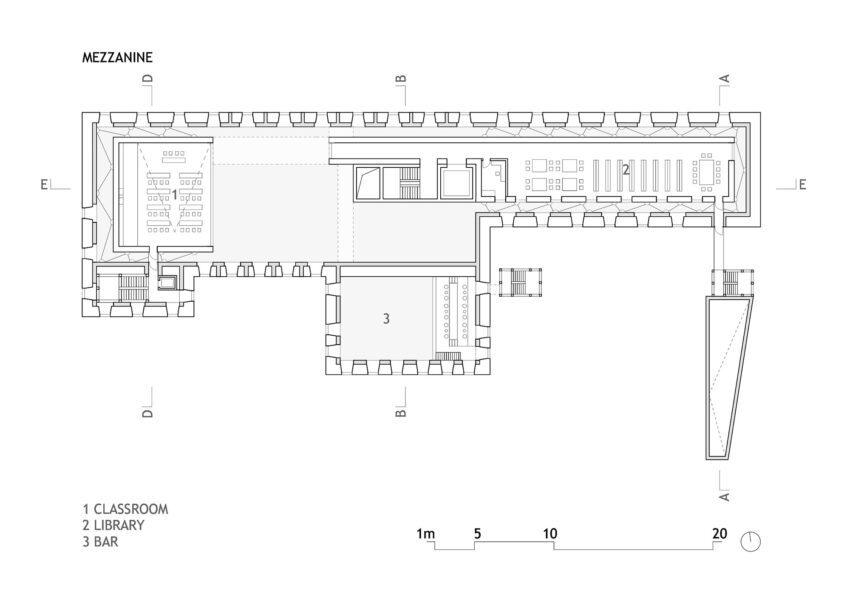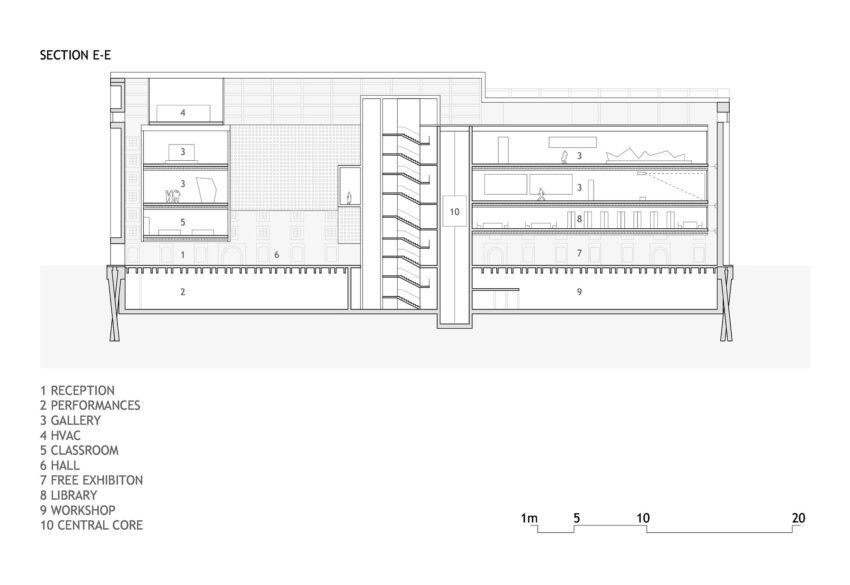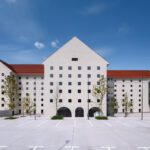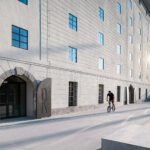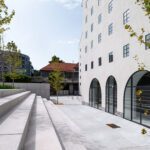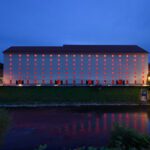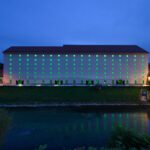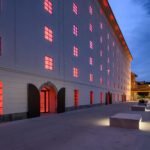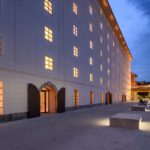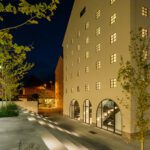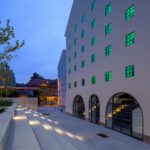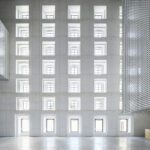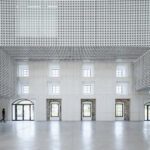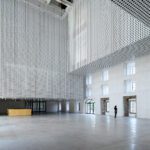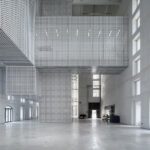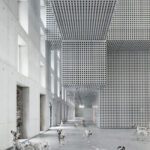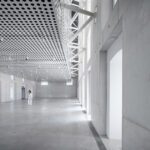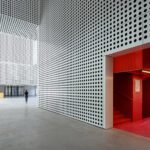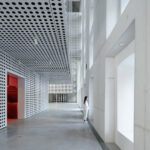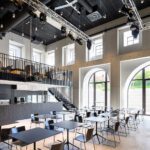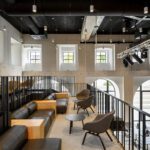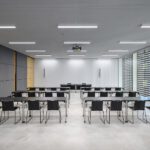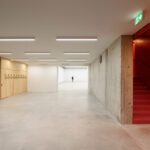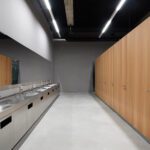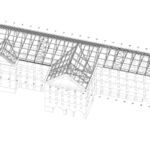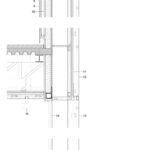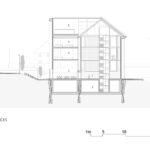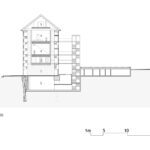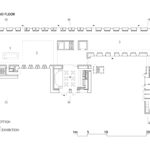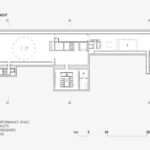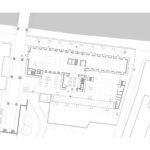Cukrarna is a former sugar refinery built in 1828 in Ljubljana, Slovenia. In 2009 Scapelab won the international competition of the city municipality to renovate the national monument into a contemporary art gallery.
Cukrarna: Sugar Refinery Renovation Technical Information
- Architects: Scapelab
- Location: Ljubljana, Slovenia
- Client: Municipality of Ljubljana
- Project Year: 2022
- Photographs: © Miran Kambič
The New Cukrarna represents a revolutionary new space in the cultural infrastructure of the city of Ljubljana. It is an urban attractor at the city center’s edge, regenerating a former derelict city area. It builds its image and aesthetic upon its rich industrial heritage, working with simple materials, and using repetition as a metaphor of the industrial revolution.
– Scapelab Architects
Cukrarna: Sugar Refinery Renovation Photographs
Text by the Architects
Cukrarna is a former sugar refinery built in 1828 in Ljubljana, Slovenia. During its’ two-hundred-year history, it was a sugar refinery, destroyed in a disastrous fire, and later a tobacco factory, a textile factory, a military barracks, and a homeless shelter. It was also a temporary home for many poets and writers from Slovenia’s Modern period, which was crucial for establishing Slovenia as an independent nation. Due to its’ significance as a monument of 19th-century industry, it has been listed as a protected building, and due to its rich history, it is firmly anchored in the Slovenian nations’ subconscious as a cultural symbol.
In 2009 the City municipality of Ljubljana organized an international competition to find the best proposal for the renovation of this national monument. Scapelab won the competition with the key idea to carve out all internal structures of the building, preserving only the historic envelope, and converting the building into a multi-functional space for contemporary art.
The ground floor is an extension of urban public space, accessible to all, free of charge. Upon entering, visitors are made aware of the gargantuan dimensions of the former factory. The gallery volumes, designed as “white cube” galleries, levitate above the ground floor, hanging from the steel roof structure. They are separated from the historic envelope by a visible gap and are wrapped in perforated, sleek metal skin, contrasting the concrete walls of the historic envelope.
The perforated skin is an aesthetic device, visibly marking the new volumes – but also a functional element. It is an acoustic dampener, reducing reverberation, which makes it possible to hold concerts in the main hall; it is also a lighting fixture, and an HVAC distribution system.
The building has a newly excavated basement, which holds a dedicated space for performance art, lockers, technical spaces, and workshops for preparing exhibitions. The gallery bar is designed as a sound stage, becoming a jazz club and live music venue in the evening.
The gallery spaces are designed as “white cube” galleries of different proportions. In key positions, the gallery spaces are transparent, showing the visitors new perspectives of the interior space. Part of the gallery spaces is also dedicated as a space for education, lectures, and children’s workshops.
– Scapelab Architects
The New Cukrarna represents a revolutionary new space in the cultural infrastructure of the city of Ljubljana. It is an urban attractor at the city center’s edge, regenerating a former derelict city area. It builds its image and aesthetic upon its rich industrial heritage, working with simple materials, and using repetition as a metaphor of the industrial revolution. This industrial choice of materials and visual language is carefully reworked as a floating composition of volumes, drawing inspiration from the rich cultural history of the poets who once resided here to provide a platform for future artists.
Cukrarna: Sugar Refinery Renovation Plans
Cukrarna: Sugar Refinery Renovation Image Gallery
- © Miran Kambič
- © Miran Kambič
- © Miran Kambič
- © Miran Kambič
- © Miran Kambič
- © Miran Kambič
- © Miran Kambič
- © Miran Kambič
- © Miran Kambič
- © Miran Kambič
- © Miran Kambič
- © Miran Kambič
- © Miran Kambič
- © Miran Kambič
- © Miran Kambič
- © Miran Kambič
- © Miran Kambič
- © Miran Kambič
- © Miran Kambič
- © Miran Kambič
- © Miran Kambič
- © Miran Kambič
- © Miran Kambič
- © Miran Kambič
- © Miran Kambič
- © Miran Kambič
- © Miran Kambič
- © Miran Kambič
- © Scapelab
- © Scapelab
- © Scapelab
- © Scapelab
- © Scapelab
- © Scapelab
- © Scapelab
- © Scapelab
- © Scapelab
- © Scapelab
- © Scapelab
- © Scapelab
About Scapelab
Scapelab is an architectural office established in 2001 by Marko Studen. For six years, he was director of Europan Slovenia and a lecturer at the Faculty of Architecture in Ljubljana and the University of California. In 2018, Boris Matic and Jernej Sipos joined Marko as owners and partners of the firm.
Scapelab was awarded the Piranesi Prize Honorable Mention (Cufar Square, 2005), the Golden Pen Award (Shared Space Slovenska Street, 2015), and the Plecnik Award (Technological Center Eles, 2019), among other national and international awards and commendations.
[cite]





